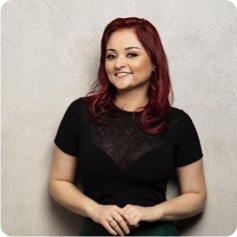References
A study of intradermotherapy with needles in facial rejuvenation

Abstract
Background:
Intradermotherapy is considered a minimally invasive procedure, which works through applications of diluted pharmacological drugs, resulting in facial rejuvenation.
Methods:
18 women were divided equally into two groups and evaluated before and after treatment (at 45 and 90 days). Four applications were made to the facial region at 15-day intervals; for group 1, traditional injections were given to introduce the anti-ageing substance, and, for group 2, a placebo intervention (0.9% saline application) was given.
Results:
In the analysis of the group 1 photos, greater filling of the nasogenian groove was observed after two sessions, and the presence of less deep wrinkles in the perioral area was also observed after four treatment sessions. Subjects in both groups complained of pain during the application, even with the use of anaesthetic. Most of the volunteers in group 1 said that the texture of the skin seemed much firmer and classified the therapy as an ‘excellent treatment’.
Conclusion:
Intradermotherapy shows favourable results in the treatment of facial rejuvenation in women, which is more evident 90 days after the initial application.








The ageing process occurs through biological, biochemical and molecular mechanisms, which sometimes overlap. Qualitative and quantitative changes in the extracellular matrix proteins occur, and, consequently, there is a reduction in the skin's retraction capacity and tensor power, resulting in increased fragility and the formation of wrinkles. Additionally, collagen cells and elastic fibres are in lesser quantities, leading to decreased skin elasticity. Combined with these factors, there is extrinsic ageing, mainly due to chronic sun exposure (photoageing) inducing important skin changes (Zouboulis and Boschnakow, 2001; Hirata et al, 2004).
There are different therapeutic options for the treatment of this condition, including intradermotherapy, also called mesotherapy, which is considered a non-surgical and minimally invasive procedure, where diluted pharmacological substances are applied, both intradermally and subcutaneously on several locations in the area to be treated. Thus, the dermis then becomes a reservoir in which the products activate dermal receptors and diffuse slowly, using the microcirculatory pathway. Applications can be made weekly or monthly, and the number of sessions reported in previous studies can vary from four to 10 applications (Herreros et al, 2011; Oliveira et al, 2013; Moura Filho et al, 2017).
Register now to continue reading
Thank you for visiting Journal of Aesthetic Nurses and reading some of our peer-reviewed resources for aesthetic nurses. To read more, please register today. You’ll enjoy the following great benefits:
What's included
-
Limited access to clinical or professional articles
-
New content and clinical newsletter updates each month


